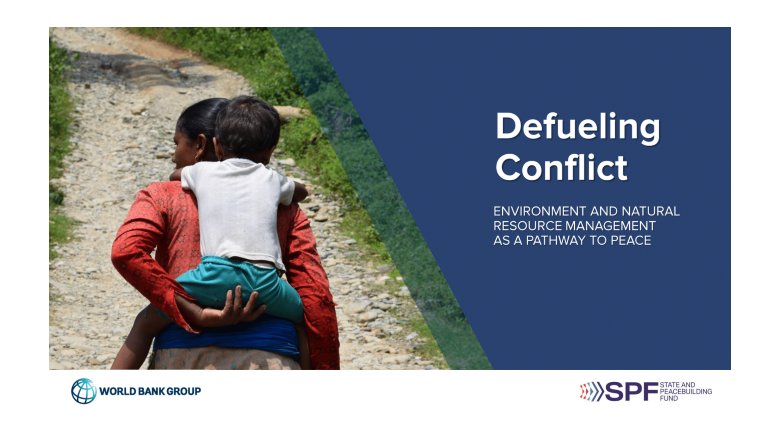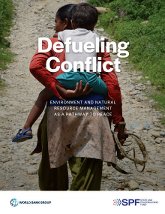BACKGROUND
Climate change, environment degradation, and conflict are strongly correlated: natural resources were a source of contention in one in four global crises and conflicts in 2014-18, and closely related to 40% of all intrastate conflicts in 1946-2006. In addition, as much as 70 percent of the most climate-vulnerable countries are also among the most fragile. Conflict-environment linkages particularly affect poor and vulnerable populations. Structural gender inequalities, discriminatory laws, and adverse gender norms put women and girls at a further disadvantage to cope with conflict and climate-related shocks, given they lack equal access to land, property, and other assets.
Understanding these linkages matter. ÐÓ°ÉÂÛ̳ Group (WBG) Strategy for Fragility, Conflict and Violence (FCV) 2020-2025 explicitly recognizes the importance of climate change as a driver of FCV and as a threat multiplier, while emphasizing the need to address both the environmental impacts and drivers of FCV. As the Strategy implementation rolls out, it is essential to share a common understanding of these links and ensure they are reflected at the project and policy level.
The report seeks to throw some light into environment-conflict dynamics with views to help integrate them more broadly into ÐÓ°ÉÂÛ̳ interventions in FCS. To this end, the report offers an in-depth analysis of the interplay between environment, climate change, fragility, and gender, while taking a deep look into ÐÓ°ÉÂÛ̳ operations in FCS.
METHODOLOGY
To meet these objectives, the report seeks to:
- Clarify environment-conflict linkages and entry points in light of the ÐÓ°ÉÂÛ̳¡¯s FCV Strategy
- Serve as a general resource for ÐÓ°ÉÂÛ̳ teams to empower their programs in FCV
- Present a broad suite of options to improve conflict-sensitive project design and implementation.
- Influence high-level policy and programs on FCV to consider natural resources more systematically.
To this end, the report offers a compendium of concise but detailed information incorporating essential guidance, reference material, and analytical tools for a broad audience with a wide range of technical expertise. The document is suitable for ÐÓ°ÉÂÛ̳ project teams across different Global Practices, as well as external readers with different ranges of expertise.
Based on desk-research and consultations with WBG staff and external experts, is designed to facilitate a shared understanding of the issues and opportunities, providing in-depth explanations about how and why environment-conflict dynamics matter. The report includes an annotated questionnaire to help integrate these dimensions into their FCV interventions.

